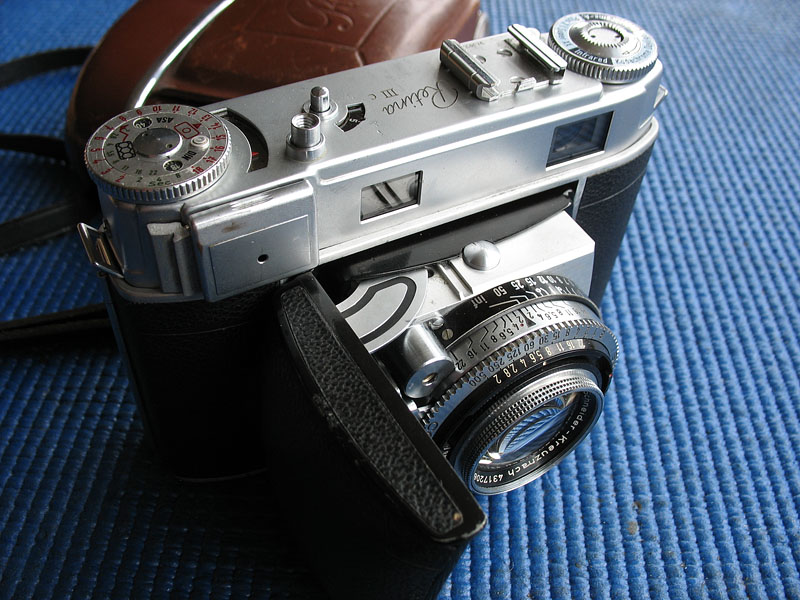Chris's camera pages
Adventures with a 'parts or repair' camera
A Retina IIIc was advertised recently on New Zealand's Trademe auction site. After looking at the description and photos I thought that I had a fair idea what to expect.
Here is the seller's description. "Beautiful old vintage fold out camera. WAS working but stopped. If you want to use it again you'll need to probably get it repaired or know what you're doing. Apparently it's something to do with the timer function (it stopped working after I set it, so I think it may be in a state of infinite countdown) At the very least, it looks amazing!" So a few useful clues here, the seller clearly says the camera needs to be repaired, so if you lack repair skills, you'd probably need to steer well-clear of this one. When a seller describes something as broken they are likely to be telling the truth.The seller goes on to suggest that the problem might lie with the timer (presumably self-timer), this is certainly a possibility with many cameras, but this would not often be the cause of trouble on a Retina IIIc, so probably something else is going on here.Now the pictures....

In this first picture, not much to note. The camera looks to be complete, often the metal flap has been broken off on a Retina IIIc. We can see the camera comes with the leather case, which is bonus, and the bottom half of the case looks OK, the original strap has been replaced though. You can just see the top half of the case there behind the camera.If you look at the bright edges of the body casting, where it meets the top cover and down beside the lens mount, you will see some obvious discoloration, this is a sign of corrosion. A little bit is normal enough and no cause for concern, but this looks extensive.
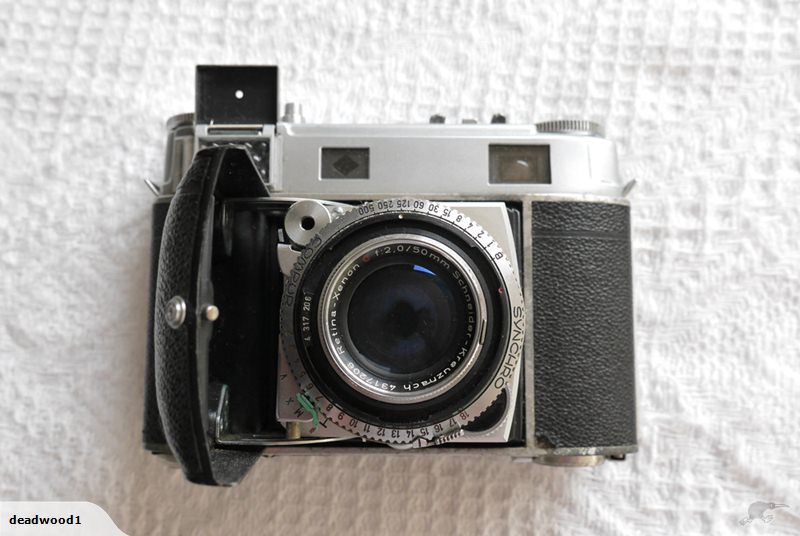
In the second picture we can see the camera out of the case. Note the discoloration indicating corrosion on the bottom edge of the body, especially to the left-hand end of the camera.Another clue to the corrosion is the state of the leatherettes. We can't see the right-hand end of the camera, or the outside of the front 'door', but while there are none of the lumpy 'zeiss bumps' visible, the leatherette is clearly lifting at the bottom corner on the left-hand end of the camera. Lifting of leatherettes on the body casting is almost always caused by corrosion under the leatherettes breaking the hold of the adhesive, so we can say that the presence of corrosion has now been confirmed.
What about that suggestion that the problem might have been to do with the timer? Well in the picture you can see the green MXV lever on the shutter is set to the M position, so the self-timer is not set and failing to run down.Any other clues? The lens doesn't look to be locked in correctly, it should be turned very slightly clockwise from the current position, though I didn't spot that until I had the camera in my hands.So overall we have a complete camera with at least a good half-case, and it is a camera that used to work for the seller, but now doesn't. The most common things to cause something like that with a Retina IIIc would be either that the shutter is just really gummed-up, or that the shutter-cocking rack is stripped.I gambled on the camera being at least a useful source of parts for future repairs, even if it was beyond economic repair, and so I placed my bid.
Once the camera arrived here I found that while the camera wasn't quite as pretty as I hoped, at least the top cover was in good shape and the meter worked. If the meter had been dead, then the camera would certainly have been dismantled for any useful parts. The corrosion was much as I expected, and I was able to confirm my guess that indeed the shutter-cocking was stripped.
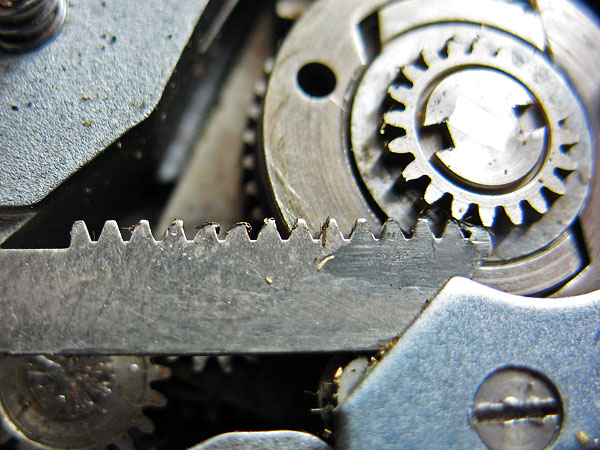
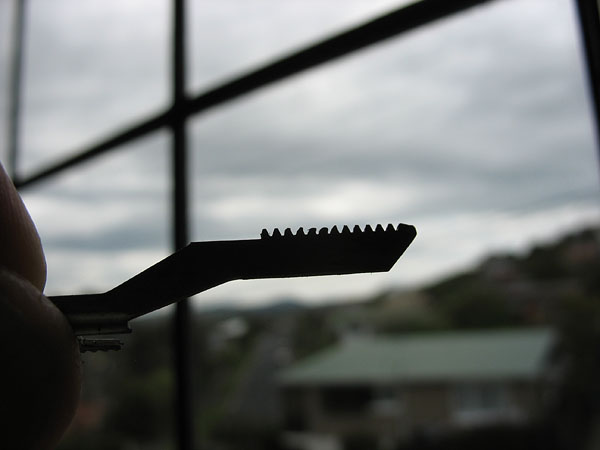
As it turned out, these were not the only faults.Someone had been into this camera previously and various things were wrong.
The cover glass for the meter scale was loose and a lttle piece was completely missing. I didn't find it anywhere, so it might have been gone for a long time. I noticed that the screw for the plate that holds the shutter-cocking rack down was actually a chromed one that should have been holding the top cover instead.
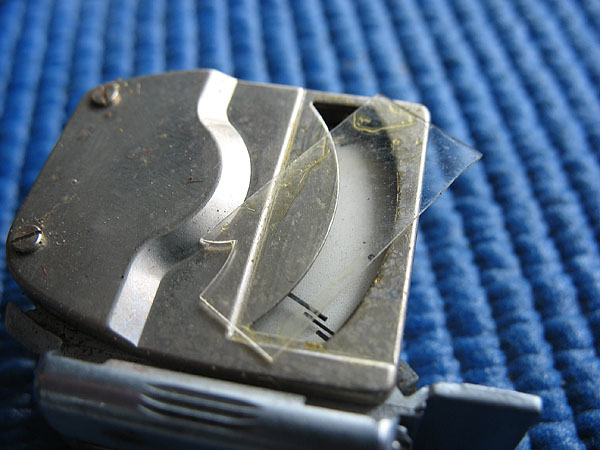
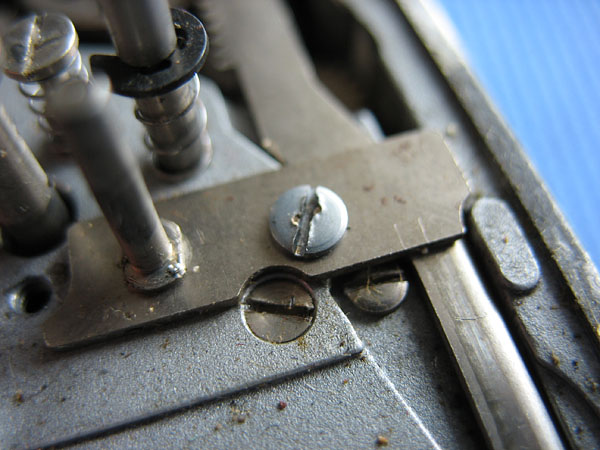
The screw on the top of the film advance shaft was loose, the shoulder screw that forms a guide for the cocking rack was also loose, and the spring under the clutch was assembled upside down.
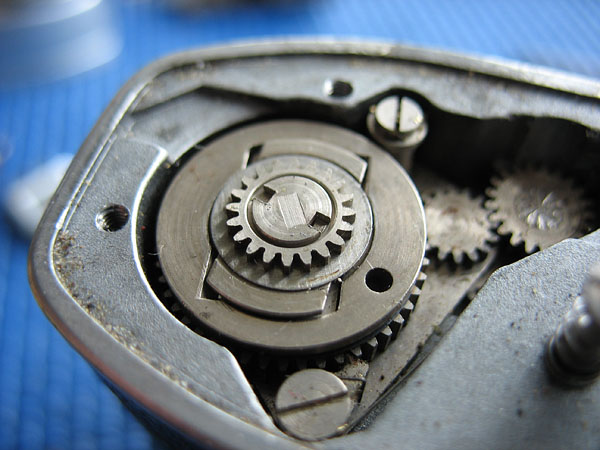

At the bottom of the camera the leatherette was lifting at the edges on both the advance lever and the camera base-plate, the body edges and film advance lever showed heavy corrosion, and the back release catch cover had loose screws.
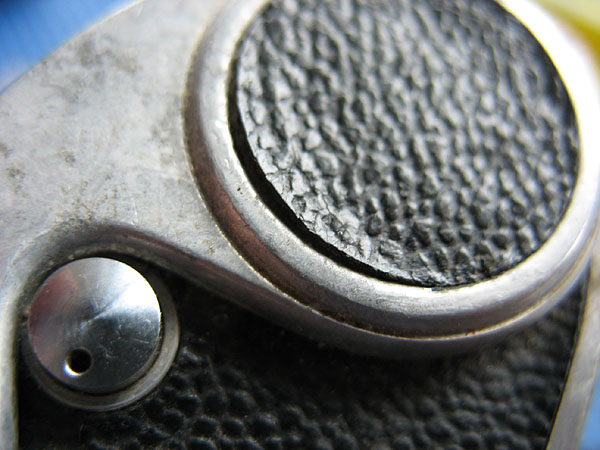
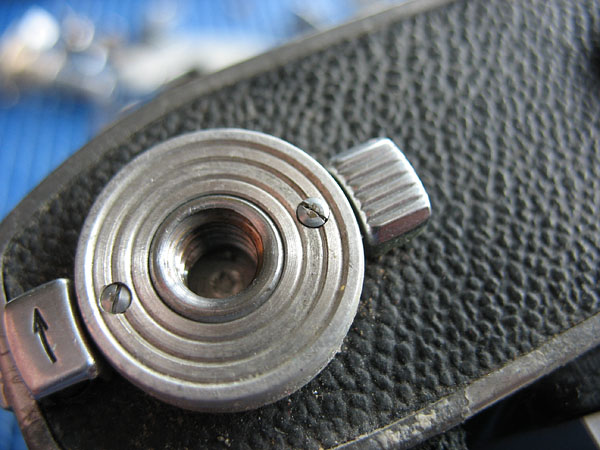
A return spring had been fitted to the shutter release shaft, but it was too heavy for the application and so distorted that the shutter release was very stiff, and the hinge-pin screw for the front door had backed out right though the leatherette.
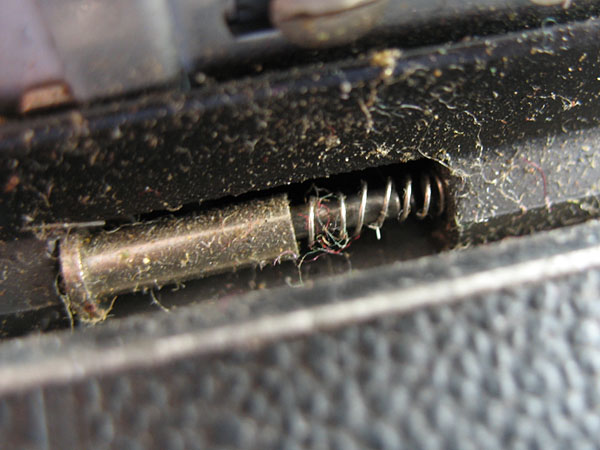
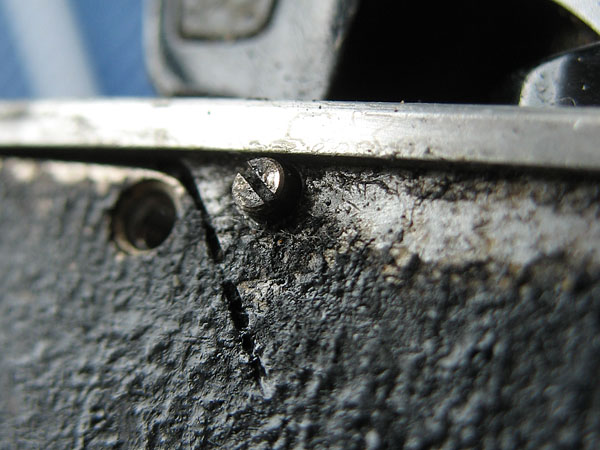
Plenty of film chips to be found here once the take-up spool had been removed, and plenty of corrosion under those loose leatherettes.
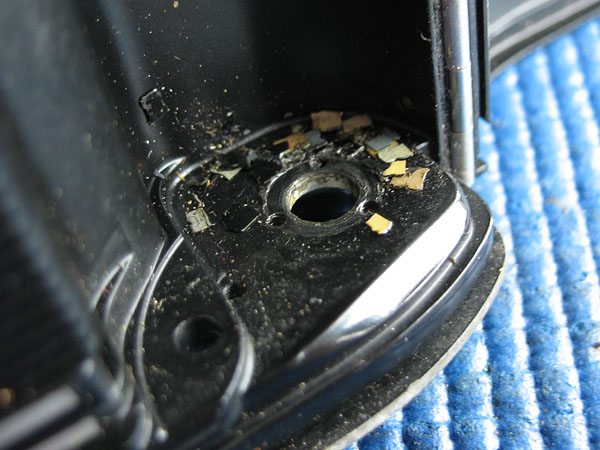
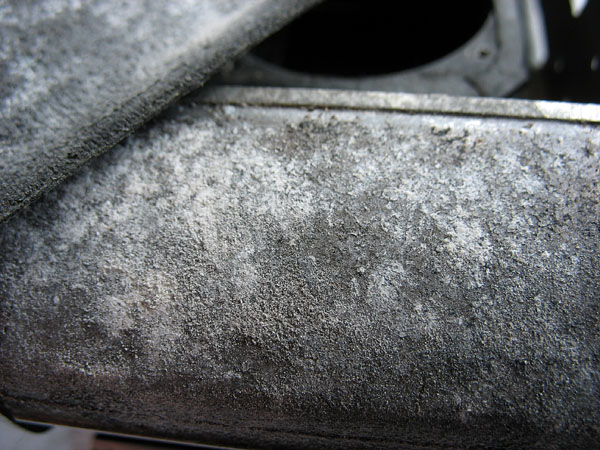
After that it was all plain sailing really, everything was stripped out of the chassis, and everything cleaned-up quite well. I fitted a new shutter-cocking rack as I reassembled the camera, and here it is all back together, looking very presentable and ready for use.
